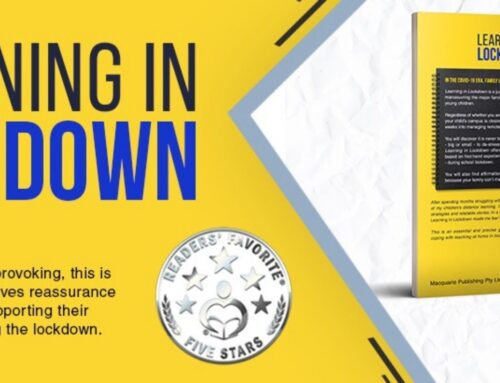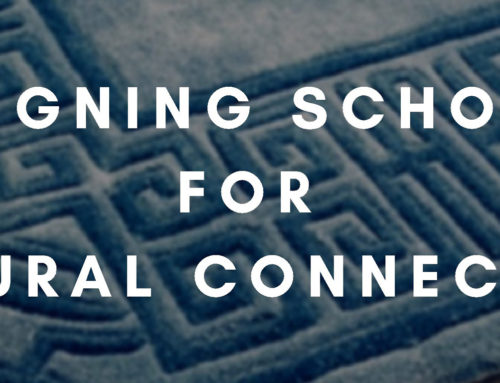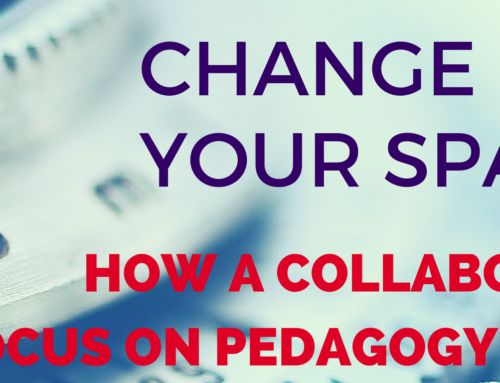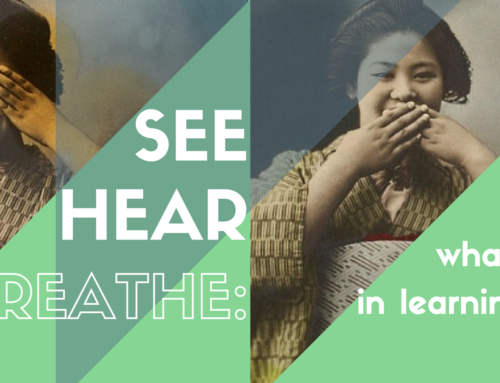
In a recent keynote presentation at a learning spaces conference, Dr. Kenn Fisher* offered a somewhat surprising position. When talking about academic studies that have evaluated the efficacy of modern learning environments, he said:
“I feel, if you were to take the best 100 studies of learning environments… that only about 8 have the rigor to put in front of policy makers”
Hearing this was rather shocking. Here we all were, attending a conference on the importance of learning spaces, and an authority in the field seemed to be saying that our emperor was wearing no clothes. Is the evidence really so thin? And if so, what were we all doing sitting in that ballroom for two days?
What does the literature say… about the literature?
Dr. Fisher was right on the money. Disappointment lies ahead for those seeking rock solid assurances from the academic literature, because there is a “dearth of systematic, empirical research being conducted on the impact of learning spaces on teaching and learning outcomes ” (Brooks 2010, p.1). In a comprehensive literature review, Dr. Jill Blackmore found that there were “many sweeping claims about the possible effects of learning spaces on student learning” and yet a “paucity of emperical evidence… with specific regard to student learning outcomes” (2011, p.5). Likewise, Woolner found that the notion that “the physical school must effect behaviour and influence learning
All of this represents a black cloud, raining on the learning spaces picnic. After all, how can motivated and progressive educators convince their principals and schools to allocate precious funding for rennovations and redesign, when the data isn’t there to back them up?
Fact vs. Fiction?
Do learning spaces act as “a catalyst… that change teaching practices and student responses in ways that improve learning outcomes”? Blackmore (2011, p.2)
This question is at the heart of why so many professionals, from across the educational landscape, are so passionate about learning spaces. They share an understanding, perhaps bordering on a belief, of the catalytic role that learning spaces play in the educative process. Experienced educators just seem to know, down to their bones, that learning spaces offer an opportunity to maximise outcomes for students, and empower quality teaching.
Solely focusing on research data as evidence is problematic, because even some of the the best examples of research in the field “suffer from methodological issues that limit their effectiveness in discerning the relationship between space and student learning outcomes” (Brooks 2010 p.2). In academic studies, if improvements to the physical environment also coincide with overhauling curriculum or improving pedegogical practices then “there is no way to know whether or not the results garnered from their studies are due to course redesign, classroom design or both” (Brooks 2010 p.3).
In short, the majority of academic studies haven’t been able to isolate the effects of learning spaces in ways that confirm the strongly-held convictions of the learning spaces true believers. Realistically then, we must look beyond empirical data and broaden the definition of what constitutes ‘evidence’ in the field of learning spaces. Try these scenarios for example:
![Educators believe that when they have the right tools, including progressive learning spaces, then their teaching is supported and empowered. Image by Mosborne01 (Own work) [CC BY-SA 3.0 (http://creativecommons.org/licenses/by-sa/3.0) or GFDL (http://www.gnu.org/copyleft/fdl.html)], via Wikimedia Commons](https://makespace4learning.com//wp-content/uploads/2016/03/Ashs-teacher-and-students-300x192.jpg)
Many educators believe that when they have the right tools, including progressive learning spaces, then their teaching is supported and empowered. Image by Mosborne01 (own work) CC BY-SA 3.0 via Wikimedia Commons.
- Several months after moving into a refurbished classroom a teacher reflects and tells you that they now teach in new ways because of the changes made to the room. This is evidence of how physical space can impact teaching practices and contribute to teacher development and change in pedagogical practices.
- You tour a campus and observe that students are choosing to collaborate, socialise and study in newly redesigned learning commons spaces. This is evidence because students ‘vote with their feet’ when it comes to the built environment. Newly designed and well executed learning spaces facilitate dynamic 21st-century learning, in intuitive and natural ways. If you build it (well), they will come.
![An example of a learning commons space. Learning commons are designed as social constructivist spaces that bring students together. By Thelmadatter (Own work) [CC BY-SA 4.0 (http://creativecommons.org/licenses/by-sa/4.0)], via Wikimedia Commons](https://makespace4learning.com//wp-content/uploads/2016/03/Learning_CommonsITESMCCM05-300x201.jpg)
An example of a learning commons space. Learning commons are designed as social constructivist spaces that bring students together. By Thelmadatter (Own work) [CC BY-SA 4.0 (http://creativecommons.org/licenses/by-sa/4.0)], via Wikimedia Commons
- When teaching and learning in a renovated school, the space just feels good to be in. Human physical needs such as natural lighting, adequate heating and fresh airflow are addressed. Ergonomics and comfort are considered. The school feels relaxing yet energizing, and students seem ready to learn and are excited to be on campus. This type of positive visceral reaction to a physical space is evidence that schools are not only about cognitive achievement, they are also spaces to support emotional, psychological, social and physical outcomes for students.
Although definitive empirical proof might be missing from the field, there are different types of evidence to consider when developing progressive physical learning environments. In the examples above we consider how the professional growth of teachers can be supported, student learning can be facilitated, and the development of the student as a ‘whole child’ can be augmented by progressive learning spaces.
Beyond the world of learning spaces there are countless other issues, topics and concepts for which we do not seek an empirical crutch to rest upon. After all, there are no metrics that measure the heart of a champion, the courage of a hero or the love of a parent. Recently, education researcher Dylan Wiliam warned that approaching teaching as a “research-based profession” was “never going to happen” because of the difficulty for teachers to find and utilize research that will apply to their own students within their own school and community context. His yeast analogy makes for an accessible and striking take on this issue. So it might also be for learning spaces. Learning spaces act as an opportunity, and are a dynamic interplay between the pedagogical choices that the educator makes and the learning behaviours and outcomes achieved by students. Learning spaces are an X factor. They seem intangible and elusive, yet vitally important to get right.
What kinds of evidence do you believe supports the learning spaces revolution? Are you comfortable looking beyond research data for evidence of the role that learning spaces play in quality education? We’d love to hear from you in the comments section.
*Kenn Fisher is Associate Professor Learning Environments at University of Melbourne, speech delivered at Learning Spaces Asia conference, Shanghai China, March 9 2016.
Blackmore J, Bateman D, O’Mara J, Loughlin J 2011, ‘The connections between learning spaces and learning outcomes: people and learning places?’, Centre for research in educational futures and innovation, Faculty of Arts and Education, Deakin University
Brooks C 2010, ‘Space matters: The impact of formal learning environments on student learning’ British Journal of Educational Technology, Vol. 42, No. 5, September 2011, pp 719–726,
Woolner P, Hall E, Higgins S, McCaughey C & Wall K 2007, ‘A sound foundation? What we know about the impact of environments on learning and the implications for Building Schools for the Future’, Oxford Review of Education, Vol. 33, No. 1, February 2007, pp. 47–70







[…] there still being a great deal of debate about empirical research related to modern learning environments, there does seem to be some common trends coming […]